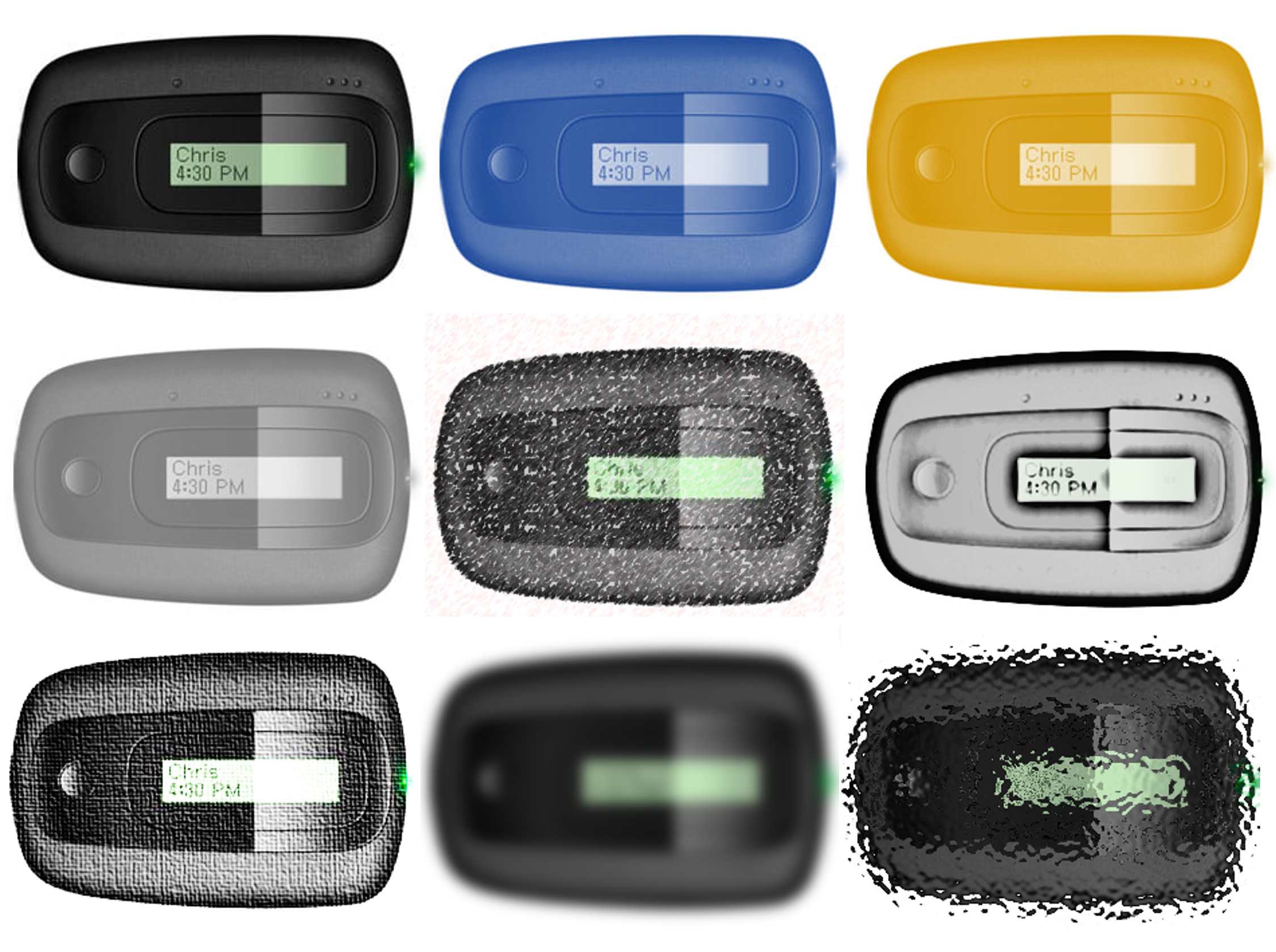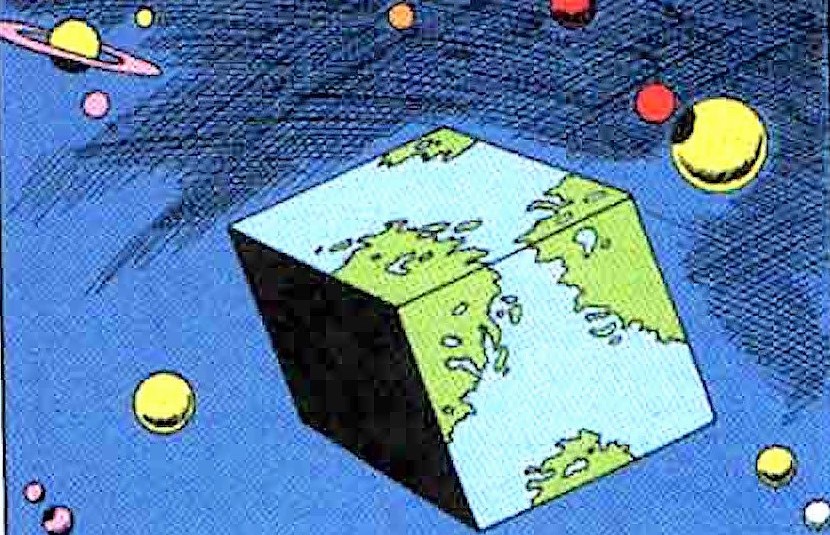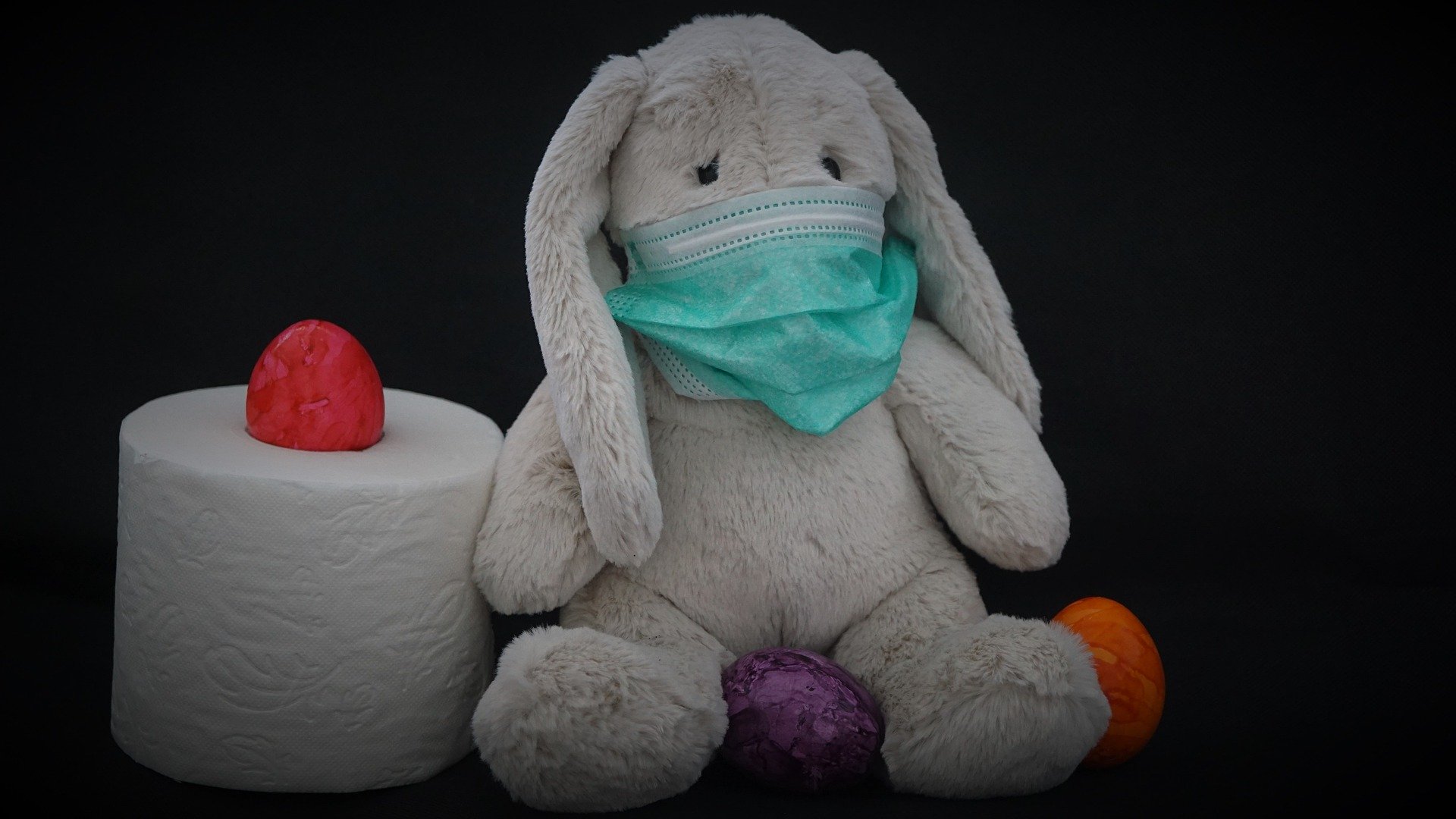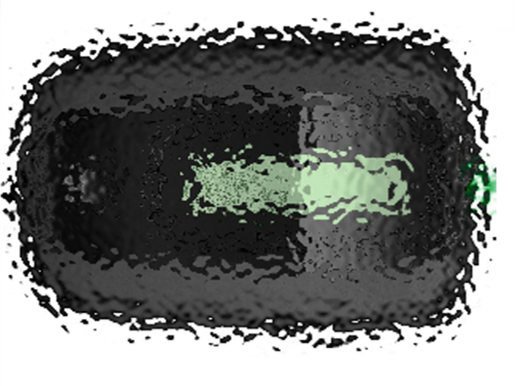
Welcome to Bizarro World!
If you were a reader of Superman comics back in the early DC days, you may remember this fictional, broken-mirror reflection of our world. It was a square-shaped planet where all the inhabitants were strange opposites of favorite characters, like Lois Lane, Jimmy Olsen, and even Superman.
And every time I’ve walked outside in the past few weeks or jumped into my car to run that rare errand, I can’t help but think about this strange, make-believe planet from the page of comic books back in the 1960s.
Except what we’re going through right now is the real deal. It’s bizarre alright, but it’s our reality, at least for the time being. And with every scene depicting empty landmarks, gas routinely under $2 (except most of us aren’t driving much), and wearing masks and latex gloves, it’s a constant reminder this is not normal.
COVID-19 has changed how we interact, where we eat, and what we do. It has altered the yardsticks by which we define success and failure. Whether you talk to a politician, a health care worker, a banker, an educator, your financial advisor, your landlord, or your hair stylist, you know all bets are off.
The Gross National Product is like a bad joke. Every company’s quarterly reports read like horror novels. And every time we turn around, it’s a news story about another part of lives being seriously disrupted.
Life as we knew it is postponed – TFN. Whether it’s sports, weddings, vacations, or graduations. COVID-19 is bigger than all of us, and we know it. On the one hand, that’s the frustration. But on the other, it’s the rationale. Or even the excuse. We already know 2020 will be a write-off, an asterisk, an anomaly. All we can hope for is that some form of “normalization” will sweep over us at a not-too-distant point in the future.
And it doesn’t matter whether you’re Donald Trump, Xi Jinping, LeBron James, Joe Biden, Tom Hanks, Vladimir Putin, Oprah, or Boris Johnson. They may be able to manage aspects of it, but no one can control it.
In these off-the-chart circumstances, anger and frustration are a gross waste of time, energy, and brain cells, even though they seem warranted. In most ways, these expressions of angst or even primal screams just make things worse. It is moments like this when we have no choice but to try our best to control the “controllables” in our lives. We have to find a way to keep swimming.
Welcome to Bizarro World. 
For radio programmers and talent, it means doing your best to be of service to your audience, your advertisers, your communities, and your companies. You strive to be as locally vital as possible, as empathetic as you can be, and try to make people feel better.
A fact of COVID-19 life is that the people, the institutions, the businesses, and the media that have been there for consumers since this nightmare began stand a stronger chance of coming out of this in as good shape as possible.
So, what about radio, TV, streaming services, podcasts, and the menu of media choices in this moment where people are mostly at home?
We’ve learned that over the past eight weeks, if you can entertain, amuse, inform, surprise, comfort, distract, and move people, you’re likelier to be in their media “hot rotation” while they wait things out. If not, see you after the crisis. That is, if the pecking order of media consumption hasn’t been permanently altered by this disruptive experience.
 There is no guarantee every media outlet will make it through the coronavirus gauntlet. It’s an industry-wide test of each brand’s value proposition, its basic worth, its ability to perform in the clutch. Some will pass it, but others will fail to retain their relevance. Some will fall by the wayside, victims of COVID-19, but just as likely, on the bubble even before America was self-isolating.
There is no guarantee every media outlet will make it through the coronavirus gauntlet. It’s an industry-wide test of each brand’s value proposition, its basic worth, its ability to perform in the clutch. Some will pass it, but others will fail to retain their relevance. Some will fall by the wayside, victims of COVID-19, but just as likely, on the bubble even before America was self-isolating.
What about yours?
How is your brand holding up? Is it resonating with the audience here in Bizarro World? Does it have what it takes to make it through?
If your first reaction to these questions is to start quoting me ratings that have been published these past several weeks, you’re missing the point of the questions.
And I’m about to take a very blasphemous point of view about how the game is played in our COVID-19 reality. While ratings have been the currency of the radio business for as long as any of us can remember, since March 11 (the day most people agree life turned upside down), we’ve been living in a strange parallel universe where traditional audience measurement has a hollow ring in light of the global pandemic.
As I write this, many states remain in some form of stay-at-home status, while even those that have relaxed their restrictions are generally taking baby steps. And many consumers are hesitant to get back to “normal,” even where the rules have been relaxed.
As of last Thursday, the U.S. Department of Labor reported more than 30 million Americans have filed for unemployment since mid-March. Yes, these are Great Depression numbers, and these levels will continue to get worse.
But that’s just the tip of the iceberg of our topsy-turvy lives. From business to business, and industry to industry, unimaginable disruption rules. Perfectly smart, strategic models that were innovative back in February have been shredded in just a handful of days.
Think Uber and Lyft. Have you taken one lately? Or how about booking that Airbnb? Not likely. Been on an airplane lately? Probably not.
Colleges are facing ugly projections of much lower enrollments this fall – assuming they all even open. Many speculate some institutions of higher learning won’t  survive. Parents and student alike are grappling with the shifting ROI of high tuition fees in an academic world where online learning is rapidly becoming the “new normal.”
survive. Parents and student alike are grappling with the shifting ROI of high tuition fees in an academic world where online learning is rapidly becoming the “new normal.”
The sports world is totally on hold. And last week, NBA team execs and players agents were reportedly calling on the league to cancel what’s left of the 2019-20 season. Will there be baseball at some point this summer – the game with the least contact of the four major sports? No one really knows.
Yet, despite the madness, radio endures. Even with all the layoffs, the furloughs, the advertising drought, and challenges unlike the industry has ever faced, radio stations (mostly) remain on the air, doing what they do, serving their communities, even though resources are evaporating and staffs are diminishing.
And still, many program directors remain fixated on the ratings, because that’s the cornerstone of how they’ve always been graded. Even though this period of time has a strong likelihood of ultimately being written off, in much the same way so many look past the Holiday book each year, many need that report card every week, month, or quarter.
For all the right reasons, Nielsen has continued to survey throughout the COVID-19 outbreak – both in diary and metered markets. And they should. Continuity is important, and particularly in the case of the big PPM metros, maintaining consistency and regularity with panels will pay off once the virus threat abates.
But that doesn’t mean programmers need to live and die by the ratings in the way they do during a “normal” period. By nature, PDs are competitive, insecure creatures. There’s never a book you feel good about. The continuous nature of the ratings translates to the sad reality the race never really ends. No one hands you the Lombardi Trophy at the end of the season. The competition just goes on and on.
Yet, this is different. New York City is in the process of cleaning out and disinfecting its subway trains. And shots of an empty, echoey. and eerie Grand Central  Station have been all over the cable news channels the past week or so. For New Yorkers and the rest of us, it’s unsettling. And scenes like this are happening in cities throughout the country and over the globe. Once crowded, bustling centers of activity, commerce, and recreation are ghost towns.
Station have been all over the cable news channels the past week or so. For New Yorkers and the rest of us, it’s unsettling. And scenes like this are happening in cities throughout the country and over the globe. Once crowded, bustling centers of activity, commerce, and recreation are ghost towns.
Welcome to Bizarro World.
And because it’s a reflection of people’s lifestyles and habits, radio listening is being impacted in wild and crazy ways.
As I look at the numbers we’re seeing these past few weeks, I’m seeing some incredibly crazy things. And for the record, they appear to be affecting our client stations in predictably unpredictable ways. Some are enjoying some of their best ratings ever. Others are left shaking their heads at strange new pecking orders amid declining market listening levels, and wild and crazy cume numbers that wildly swing with each passing weekly.
 None of this is to take anything away from some of the great numbers we’re seeing from many news-focused stations – especially on the public radio side of the aisle. Their success during COVID-19 is largely due to their long-term commitment to journalism over the years, and in some cases, decades. They deserve the success they’re having.
None of this is to take anything away from some of the great numbers we’re seeing from many news-focused stations – especially on the public radio side of the aisle. Their success during COVID-19 is largely due to their long-term commitment to journalism over the years, and in some cases, decades. They deserve the success they’re having.
But that doesn’t mean these are “normal abnormal” conditions – just another point in time where we’re simply looking at a seasonal occurrence – a weather event, a sports championship, even a local emergency.
The other difference here is that the tsunami of business closures and shutdowns has severely impacted advertising campaigns. If having great ratings translated into higher rates and impressive revenue, it would be one thing. But even the apparent COVID-19 ratings winners aren’t going to rake it in while the virus is still very much in the air.
I’m not at all suggesting programmers and managers ignore the ratings during this time. They still remain the only yardstick we have, despite the fact our environment continues to warp. Many are still incentivized and bonused on these numbers, “normal” or not.
But sanity suggests putting them in perspective. They are only reflective of this freakish moment in time – our version of Bizarro World.
Every minute programmers spend obsessing over declining cumes, meter placement, panel shifts, quarter-hour maintenance, and stopset structure, they’re not  bringing value to their radio station or the audiences they are hired to serve at this critical point in time. As PDs know all too well, sometimes the things they do to attract higher ratings aren’t necessarily the things audiences value. That relationship is intensified during these crazy COVID-19 times.
bringing value to their radio station or the audiences they are hired to serve at this critical point in time. As PDs know all too well, sometimes the things they do to attract higher ratings aren’t necessarily the things audiences value. That relationship is intensified during these crazy COVID-19 times.
It has been a long time since I’ve actually programmed a radio station. But I vividly remember those days when I’d walk out the door at night, wondering exactly what I had actually done all day. Between the meetings and other distractions, there are days when it doesn’t feel like you are “doing radio.”
Over dinner many years ago, I expressed that frustration to a mentor, and he gave me this advice:
“Come to work every morning with the expressed goal of doing at least one thing that will make your station better. If you can leave the building at the end of your day, reasonably confident that you did something positive for the station, then you’ve done your job.”
I took that advice seriously, just as you should now. And while I didn’t leave the station every night having accomplished that goal, I managed to on most days.
At this point in your station’s arc – with the insanity of COVID-19 impacting your audience each and every day – that counsel from an old broadcaster rings especially true today.
Now, I know everyone has a unique set of pressures, especially the people in your company to whom you’re accountable. I’m not suggesting you “break format” or turn the place upside down. But I am saying that at this point in time, the mantra “Do great radio” should be guiding your decision-making.
There are have been a lot of great ideas floating around these past few weeks from many corners of the indu stry. We’ve posted a lot of them on in our COVID-19 page, and other consultants and industry organizations have graciously made them available to everyone – without passwords or other barriers to access. Many of them can help make your station sound more vital, more interesting, more connected, more in the moment. And even more fun.
stry. We’ve posted a lot of them on in our COVID-19 page, and other consultants and industry organizations have graciously made them available to everyone – without passwords or other barriers to access. Many of them can help make your station sound more vital, more interesting, more connected, more in the moment. And even more fun.
Better yet, come up with your own ideas that are congruent with your brand and the flavor of your market, but that step outside of your box; concepts that engage, delight, and motivate your audience to pay attention and feel a little better. The stations that have been in this head space these past few weeks will tell you the response from listeners has been strong and powerful. People appreciate when you serve it up differently, acknowledge what’s going on out there, provide a sense of place with where they live and work, and reflect their feelings.
Do I still check the ratings every day? Of course I do. And so should you.
But the degree of time and effort we spend “gaming the system” and sweating the details that provide no value for our audiences is a focus we could be putting on making a difference, serving our communities, and helping fortify our brands for the long haul.
It starts with an understanding of your station’s impact – not its average ratings or time spent listening. We are at a crazy moment when the power of broadcast radio’s competitors may be at an all-time low. Spotify isn’t the least bit inspiring; at best, it’s a distraction. SiriusXM has become a diminished part of many lives because it is an in-car medium that has no local relevance. Even many podcasts have lost some of their flair when people are out of their comfort zones. This is a moment when broadcast radio can shine.
But it requires vision and perspective. Jacobs Media will try to provide you with more of that “research radar” we initiated with our first COVID-19 study last month. We’re following it up next week, and there’s time for you to be sure your station gets a seat at the table. There’s information about how you can easily become an active participant here, and I’d encourage you to check it out and take part in this important study that will make your decision-making more informed, strategic, and smart.
But ultimately, it comes down to that question posed to me nearly 40 years ago. Radio has changed a lot since the days I roamed the halls at WRIF. But the one constant is the need for the vision person in the building to make consistent contributions to the enterprise, day after day, with the help of their team.
While watching Governor Andrew Cuomo’s press conference the other day, he was asked a question about how he approaches his job during this trying time for his state:
 “Everybody has to think outside the box…because there is no box.”
“Everybody has to think outside the box…because there is no box.”
Did you make your radio station better today? Did you do something interesting, fun, and enchanting? Did you move and engage your audience? Did you make them feel a little better?
Do those things, and you will serve your audience well during this 100-year crisis.
And your ratings might actually go up.
Welcome to Bizarro World.
- Like A Pair Of Old Jeans - April 2, 2025
- What’s Fair Is Fair - April 1, 2025
- What’s On Your Bucket List? - March 31, 2025




Outstanding piece Fred. It’s those who can look beyond how we’re measured day to day that will make the biggest impact on their listeners. Great read
I’m thinking so, too, Jason. TY for the comment.
Excellent, Fred. Perception is the new reality and great radio means agility.
Appreciate it, Clark.
Excellent read Fred — welcome to the Twilight Zone!
That, too. Thanks, David.
How do you get that KLOS face mask? Looked on their webpage & didn’t see it available for sale and thanks Fred. Enjoyed the last (5/4 & 5) 2 days of blogs. And you can’t find a mask in my county. Using a Crown bag that’s hard to breathe through. Now have ears of a horse from the elastic.
I’ll reach out to Keith Cunningham on the masks. I like the Crown idea – your heart’s in the right place.
Appreciate it & tell Keith I’ll pay for it + shipping. I’ll buy you a Crown at MSBC.